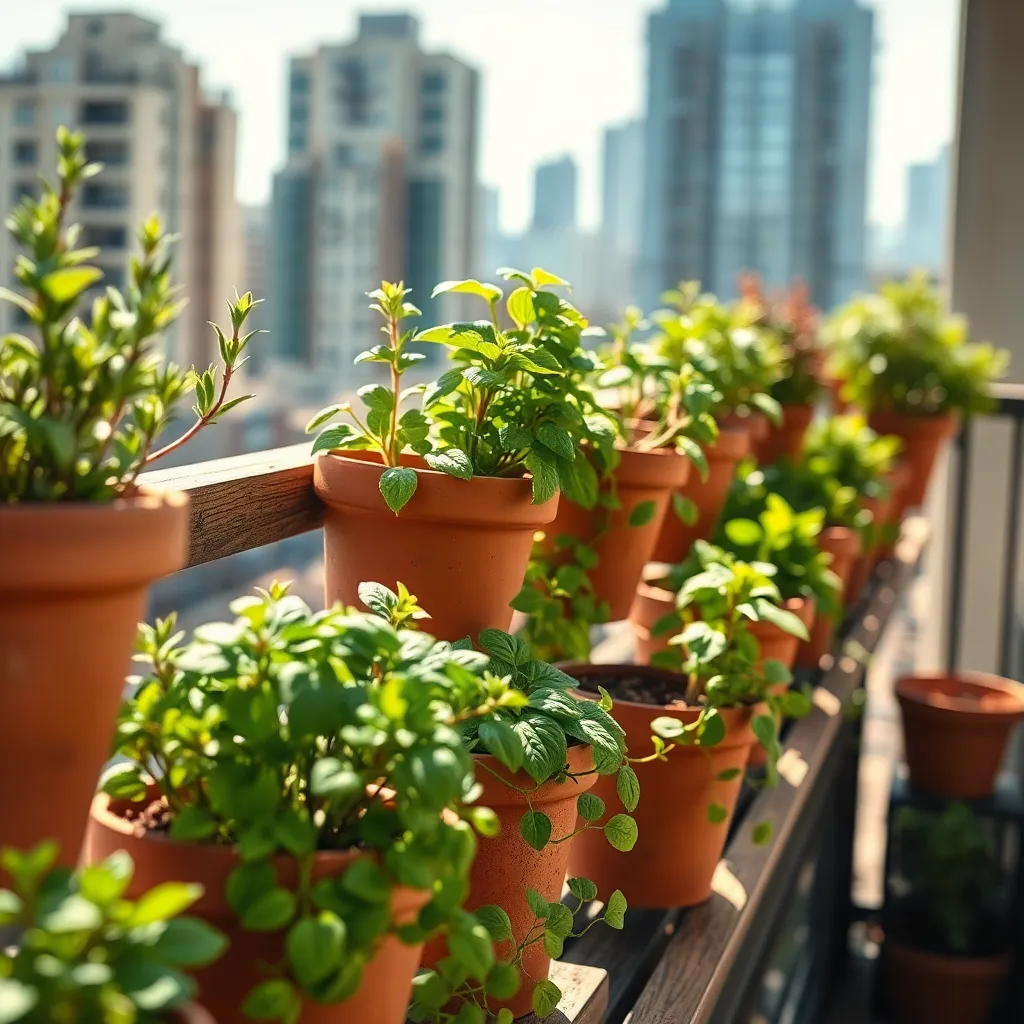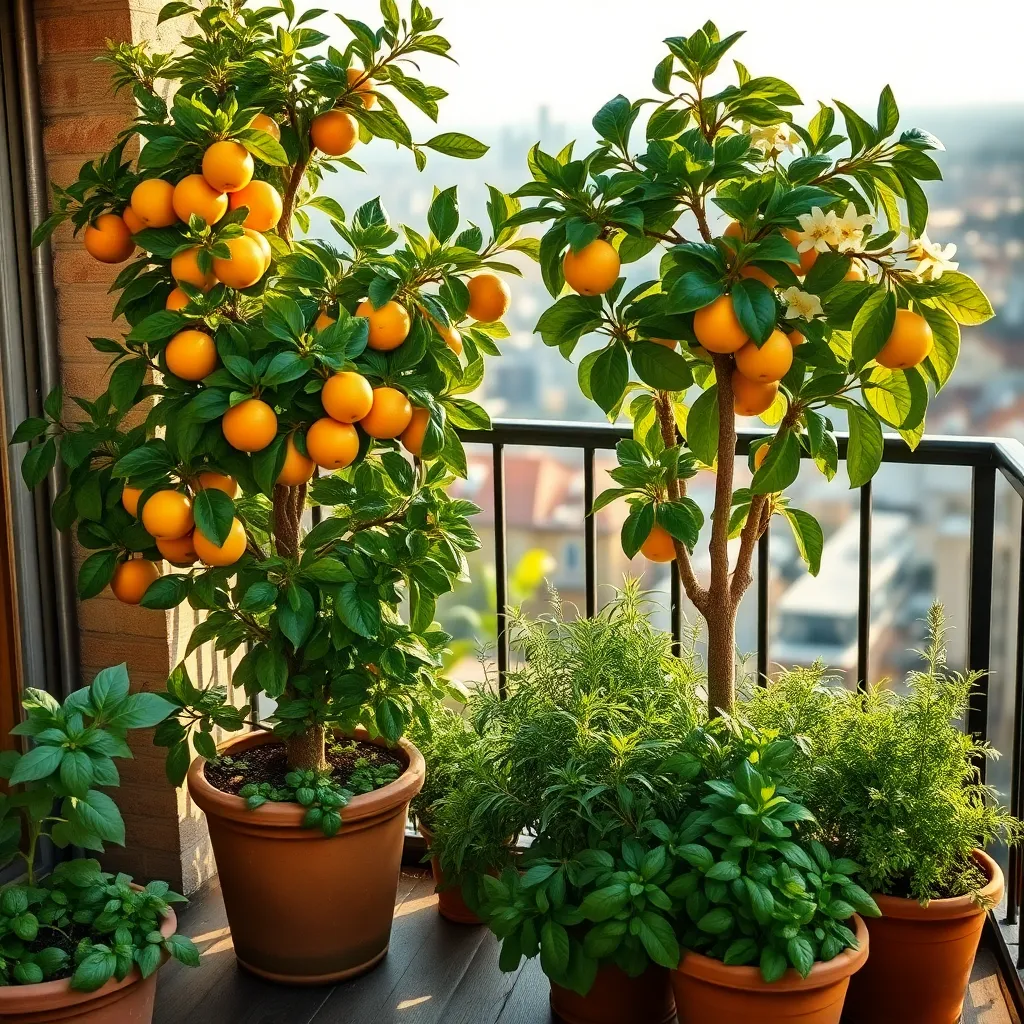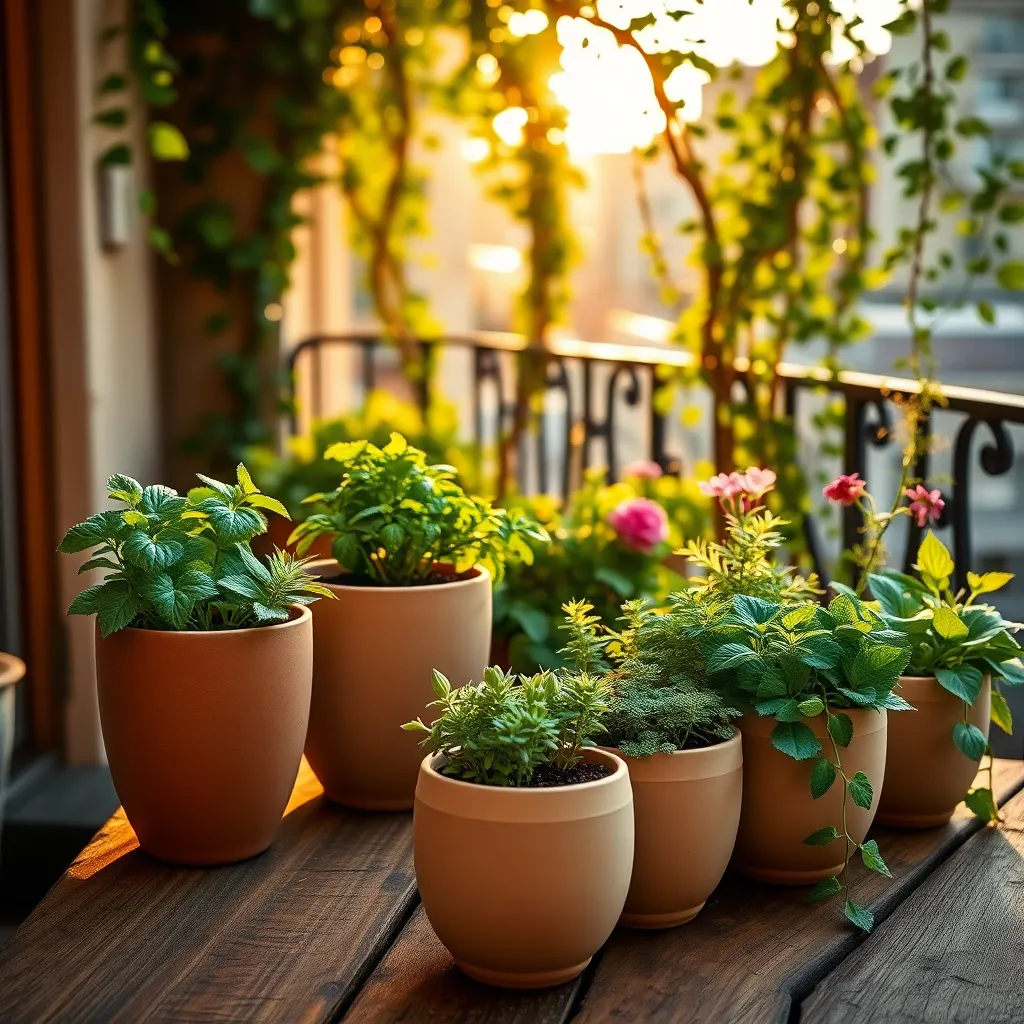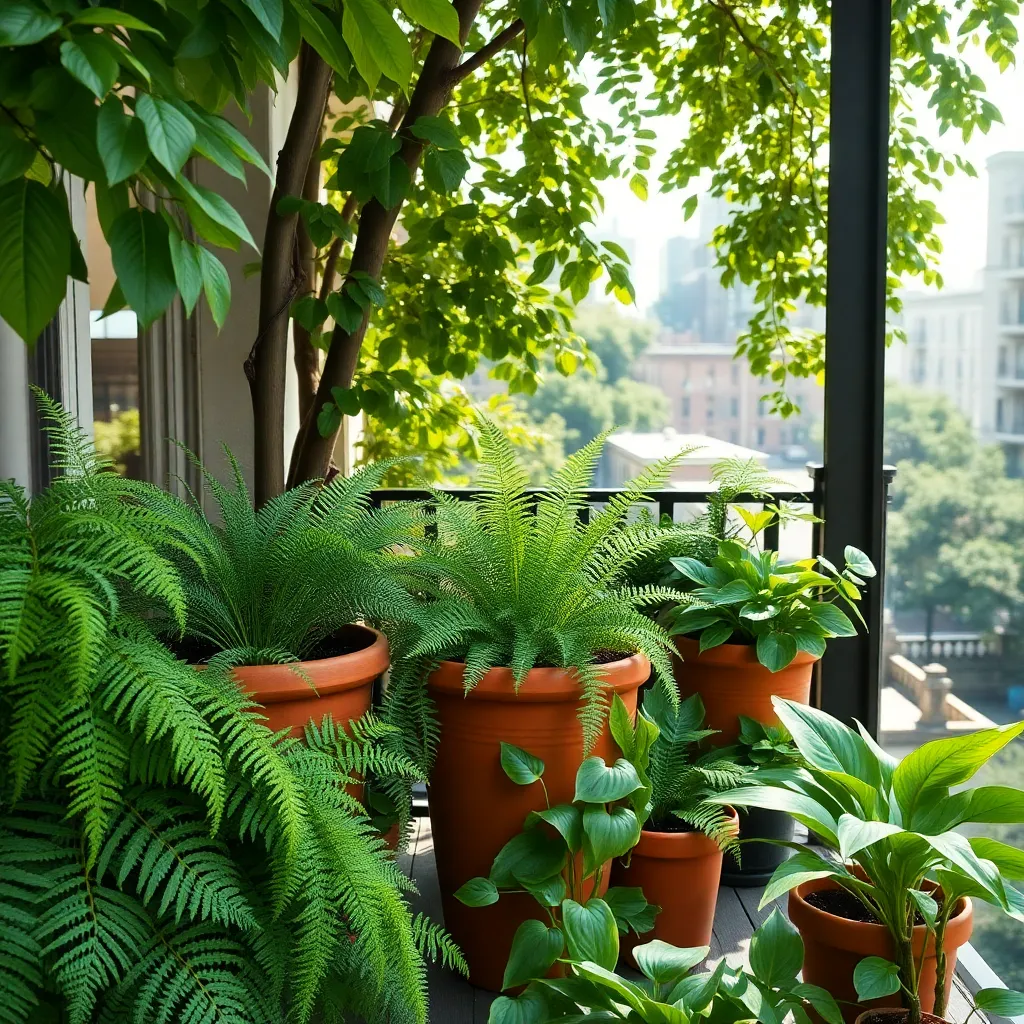Imagine stepping onto your apartment balcony and being greeted by a lush, vibrant oasis that you’ve nurtured with your own hands. Whether you’re a budding gardener or a seasoned plant enthusiast, cultivating a thriving balcony garden is a delightful way to bring nature into your urban life, offering a serene escape and a splash of green that can transform your living space.
This carefully curated list of the best plants for apartment balconies is your key to unlocking a world of horticultural possibilities, even in the coziest of spaces. You’ll discover plants that thrive in limited sunlight, require minimal maintenance, and reward you with stunning foliage and blooms, empowering you to create your own little paradise no matter your level of expertise.
Embrace the joy and satisfaction of watching your plants flourish, knowing that these selections are tailored to suit the unique challenges of balcony gardening. With practical tips and expert advice sprinkled throughout this guide, you’ll feel confident and inspired to embark on your gardening journey, transforming your balcony into a personal oasis that will continually bring you joy and a sense of accomplishment.
Compact Herb Planters (Space-Saving Culinary Delight)

Growing herbs in compact planters is a fantastic way to maximize your apartment balcony space while enjoying fresh flavors. Many herbs thrive in limited spaces, making them ideal for urban gardening, where every square inch counts.
Choose herbs like basil, chives, and parsley, which are well-suited to small containers. These plants require minimal space and can be harvested regularly, providing a continuous supply of fresh ingredients for your culinary creations.
To start your herb garden, use a well-draining potting mix, enriched with organic matter, to ensure healthy growth. Make sure your containers have drainage holes to prevent waterlogging, which can lead to root rot.
Position your herb planters in a sunny spot on the balcony, as most herbs prefer at least six hours of sunlight daily. If your space lacks sufficient sunlight, consider using grow lights to supplement natural light and boost plant growth.
Water your herbs when the top inch of soil feels dry, typically once or twice a week, depending on the weather and plant needs. Be mindful not to overwater, as herbs like thyme and rosemary prefer drier conditions.
For more experienced gardeners, try companion planting by mixing different herbs in the same container to save space and enhance growth. For instance, basil and oregano grow well together and can improve each other’s flavor and vigor.
Dwarf Citrus Trees (Fragrant and Fruitful in Limited Spaces)

Dwarf citrus trees are perfect for apartment balconies, offering both beauty and bounty in small spaces. These compact trees can thrive in containers, making them an excellent choice for urban gardeners with limited room.
Start by selecting a dwarf variety like Meyer lemon or Calamondin orange, as these are well-suited to container growing. Ensure the pot is at least 18 inches wide and has drainage holes to prevent water logging.
Place your tree in a sunny location, as citrus trees require at least six hours of direct sunlight daily. During the warmer months, water regularly to keep the soil consistently moist but not soggy, reducing frequency in winter.
For optimal growth, use a well-draining potting mix specifically designed for citrus or cacti. Fertilize every six weeks with a balanced citrus fertilizer to support healthy fruit production and lush foliage.
Prune your dwarf citrus tree to maintain its shape and encourage airflow, which helps prevent disease. Advanced gardeners can experiment with grafting techniques to grow multiple citrus varieties on a single tree, maximizing harvest diversity in minimal space.
Climbing Vines Trellis (Vertical Greenery for Tight Corners)

Transform your apartment balcony into a lush paradise with climbing vines that offer both beauty and privacy. These vertical growers are perfect for tight corners, maximizing space while adding a touch of greenery.
Choose climbing plants like clematis, morning glory, or ivy that thrive in containers and adapt well to balcony life. Ensure your trellis is sturdy enough to support the weight and spread of the vines as they mature.
For optimal growth, position your trellis where it receives at least four to six hours of sunlight each day. If your balcony is shaded, consider shade-tolerant vines such as sweet autumn clematis or Boston ivy.
Watering is crucial, especially during the growing season; keep the soil consistently moist but not waterlogged. Use a high-quality potting mix with good drainage, and feed your vines with a balanced liquid fertilizer every two to four weeks.
Advanced gardeners can experiment with training techniques to encourage fuller and more even coverage on the trellis. Pruning back overgrown sections not only shapes the plant but also promotes healthier, more vigorous growth.
Self-Watering Pots (Low-Maintenance Hydration Solution)

Self-watering pots offer an efficient solution for busy gardeners looking to maintain healthy plants with minimal effort. These pots are designed with a reservoir at the bottom, which allows plants to draw up water as needed, preventing both overwatering and underwatering.
For apartment balcony gardeners, this means less frequent watering and more consistent plant health. Choose pots with a visible water level indicator to easily monitor when it’s time to refill the reservoir, ensuring your plants never run dry.
When selecting plants for self-watering pots, opt for species that thrive in consistent moisture, such as herbs, ferns, and certain vegetables like peppers. Avoid plants that prefer dry conditions, such as succulents, as they may not perform well with constant access to water.
To maximize the benefits, use a high-quality potting mix that retains moisture but also provides adequate drainage. Mix in perlite or vermiculite to enhance aeration and prevent root rot, which can occur if roots remain too wet for extended periods.
Shade-Tolerant Ferns (Lush Greenery for Shady Spots)

Ferns are an excellent choice for adding lush greenery to your apartment balcony, especially if it doesn’t get much direct sunlight. They thrive in shady spots, making them perfect companions for those dim corners where other plants might struggle.
One of the most popular ferns for balconies is the Boston Fern, known for its feathery fronds. To keep it healthy, ensure the soil remains consistently moist but not waterlogged, and use a potting mix rich in organic matter.
Another great option is the Maidenhair Fern, which offers delicate, fan-shaped fronds that add a touch of elegance. Keep the humidity levels high by misting regularly or placing a tray of water nearby to encourage growth.
For a more exotic touch, consider the Bird’s Nest Fern, which features broad, wavy fronds. This fern prefers indirect light and thrives when fed with a diluted liquid fertilizer every four to six weeks during the growing season.
Conclusion: Growing Success with These Plants
In cultivating a thriving balcony garden, we’ve explored five essential relationship concepts that resonate far beyond the realm of plants. First, we learned about the importance of understanding individual needs, akin to choosing the right plants that suit your balcony’s light conditions. Second, we delved into nurturing growth by providing consistent care, just as relationships thrive with attention and effort. Third, adaptability emerged as crucial, reminding us to adjust to changing circumstances, such as weather shifts affecting plant health. Fourth, we celebrated diversity, much like a variety of plants enriching a garden, diversity in relationships brings vibrancy and resilience. Lastly, patience proved vital, as flourishing gardens and relationships both require time and dedication.
As an actionable next step, why not choose a new plant today that symbolizes growth in your personal relationships? Let it remind you of the care and attention both plants and relationships need.
Remember to save this article for future reference, as it can serve as a guide for nurturing both your garden and personal connections. Embrace these lessons, and you’ll be well on your way to blossoming relationships and a thriving, green sanctuary. Your commitment today sows the seeds for tomorrow’s success.

